The Town of Newmarket uses several measures to slow down traffic and improve overall traffic safety.
Category Two measures are solutions that are more permanent and cost more to implement. They include:
- Speed humps (not applicable on roads with bike lanes, paths or trails)
- Curb radius reductions and curb extensions
- Centre medians/pedestrian refuge islands
- S-shaped curb extensions on the road (called chicanes)
- Lane narrowing (construction)
Speed Humps
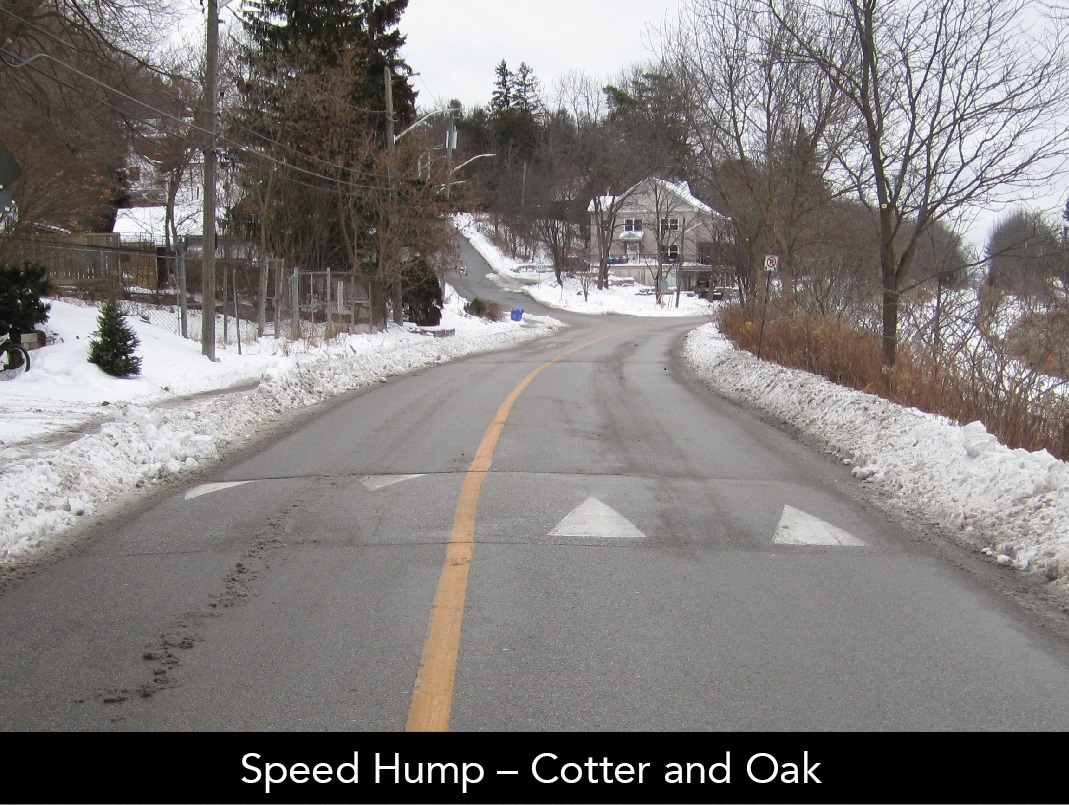 The Town has used speed humps in two areas: Kingston/Malton/Lancaster and Cotter/Oak. When it comes to speed humps, the Town focuses on location, their design requirements and how they are placed (most effective if properly spaced and in groups of three to four).
The Town has used speed humps in two areas: Kingston/Malton/Lancaster and Cotter/Oak. When it comes to speed humps, the Town focuses on location, their design requirements and how they are placed (most effective if properly spaced and in groups of three to four).
Speed humps, therefore, are not considered in the following locations:
- Roads with bike lanes
- Roads with a 5 per cent slope
- Road curves
- Near intersections (controlled or uncontrolled)
- Roadways with daily volumes exceeding 5,000 vehicles per day
- Industrial areas
When assessing speed hump locations, the Town also must look at the proximity to:
- Public transit routes
- Primary or minor collector roads
- Schools
- The factors listed above limit the number of speed humps around Newmarket.
Curb radius reduction 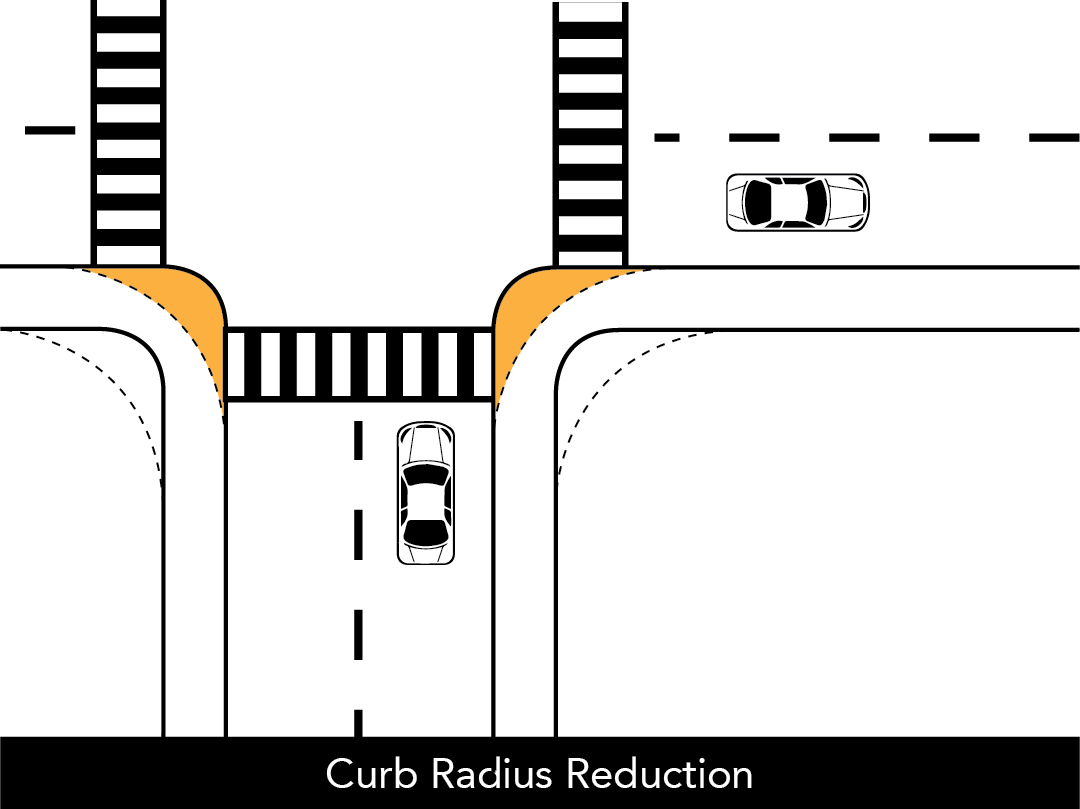
Making curb radii smaller at intersections forces drivers to slow down and creates shorter distances for pedestrians to cross the street, generally improving pedestrian safety.The radius of a typical local road curb is 8.0 metres and 9.0 metres for collector roads. This radius is sufficient for the majority of larger service and emergency service vehicles, and forms part of our current Engineering Standards. Curb radius reduction will be considered for all road rehabilitations.
Curb extension 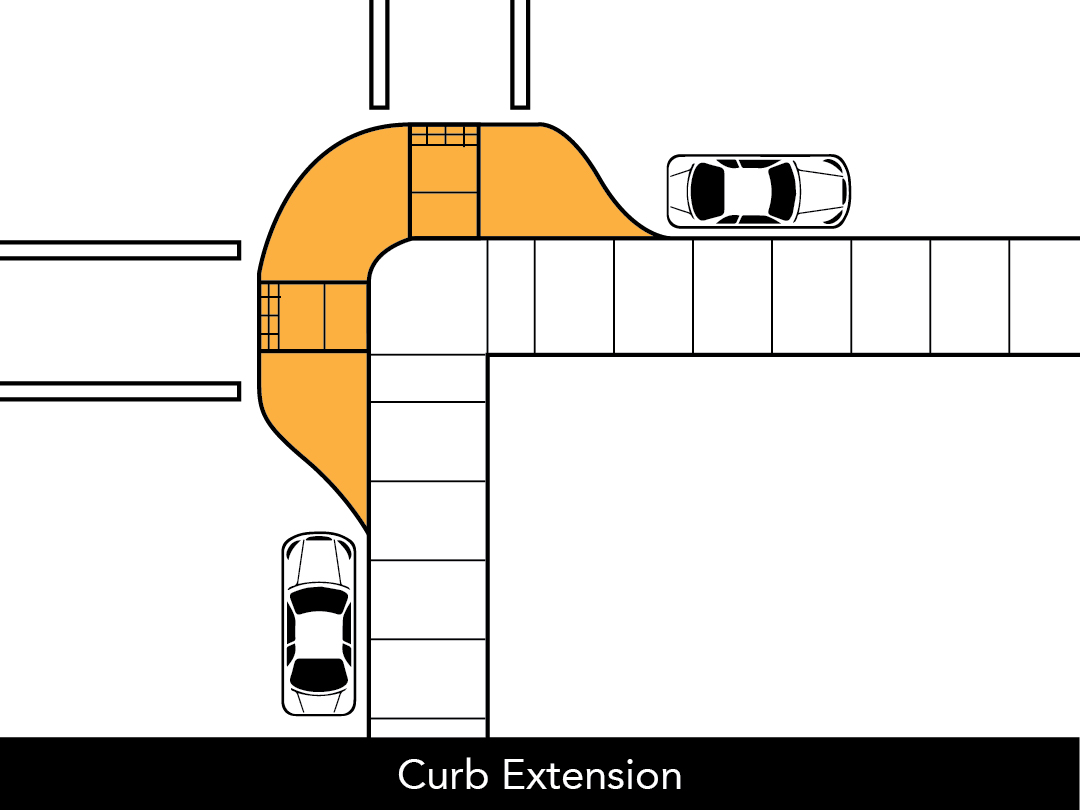
With curb extensions, the curbs are extended out, creating a pinch point as the intersection approaches. The curb extensions shorten the crossing distance for pedestrians, thereby enhancing pedestrian safety.Curb extensions are effective, however, they must be designed differently to accommodate roads with bicycle lanes.
Centre median/pedestrian refuge islands 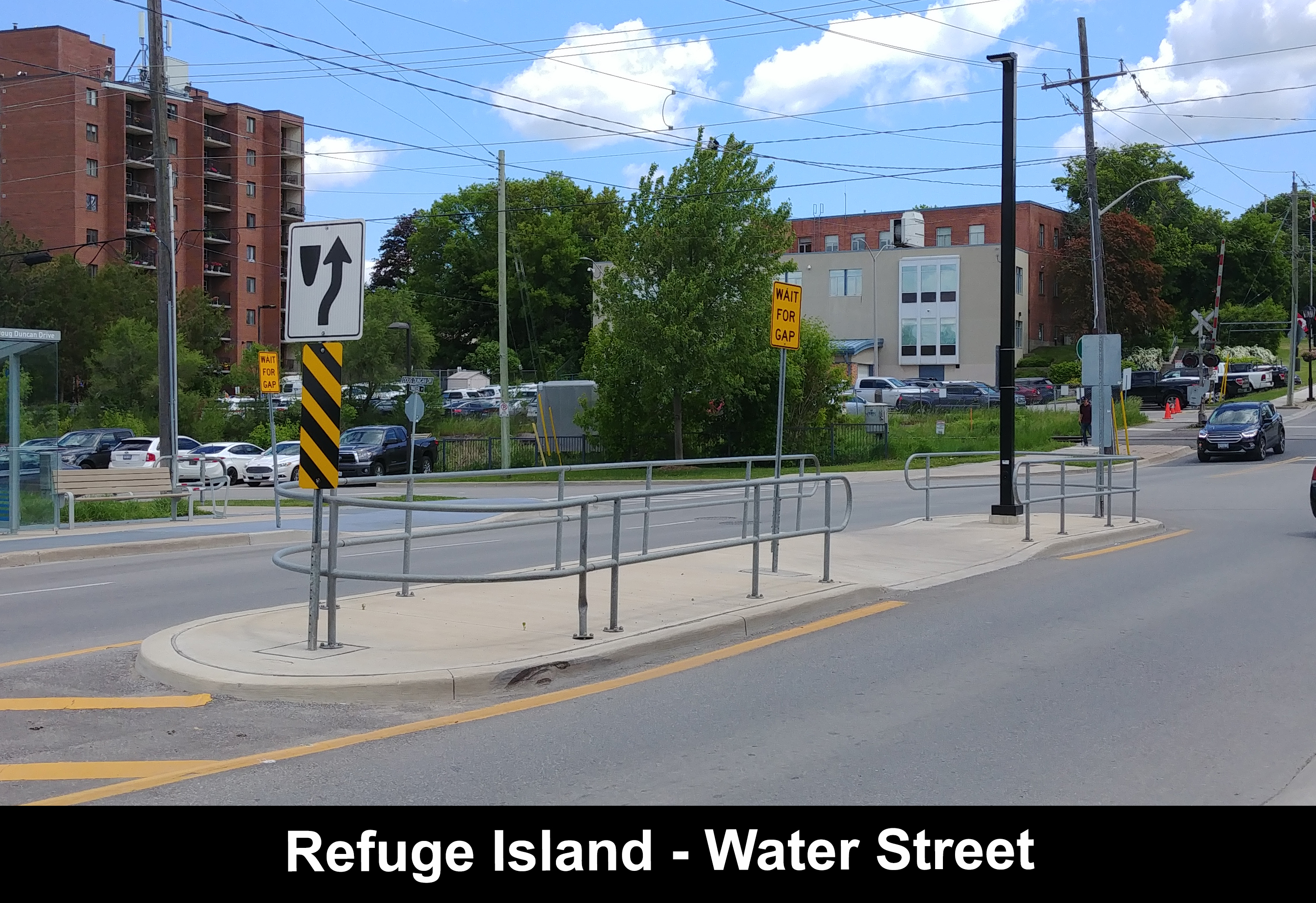
The Town has two pedestrian refuge islands - one on William Roe Boulevard, just east of Yonge Street and one on Water Street, just west of Doug Duncan Drive.The pedestrian refuge island allows pedestrians to cross one lane at a time with an area of safe refuge in between. Refuge islands are very effective for locations where trails and roads intersect.
S-shaped curve extensions on the road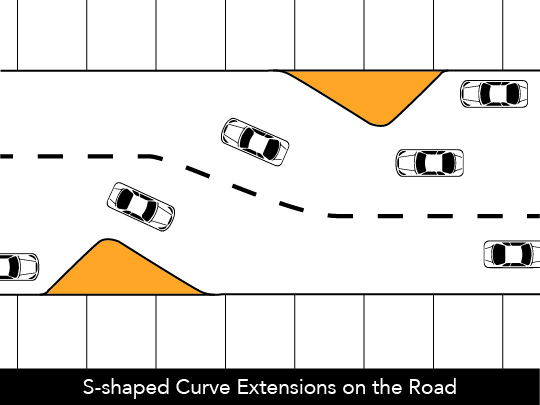
S-shaped curve extensions can be built into the road to slow down traffic. The Town does not currently use S-shaped curve extensions on local roads, however they could be considered for future use. As with speed humps, these S-shaped curves require placement in groups of three or four. To be most effective, the curves should be constructed on roads with moderate traffic.S-shaped curves constructed on roads with low traffic provide poor results, as motorists tend to drive down the middle and not closer to the right curb line.
.jpg) Lane narrowing (construction)
Lane narrowing (construction)
Physically narrowing lanes is an effective traffic calming measure. With new construction projects throughout Newmarket, the Town has been narrowing the travelled portion of existing roads from 8.5 metres to 8.0 metres for local roads, and 9.7 metres to 9.0 metres for collector roads.This is the current standard for new subdivision construction.